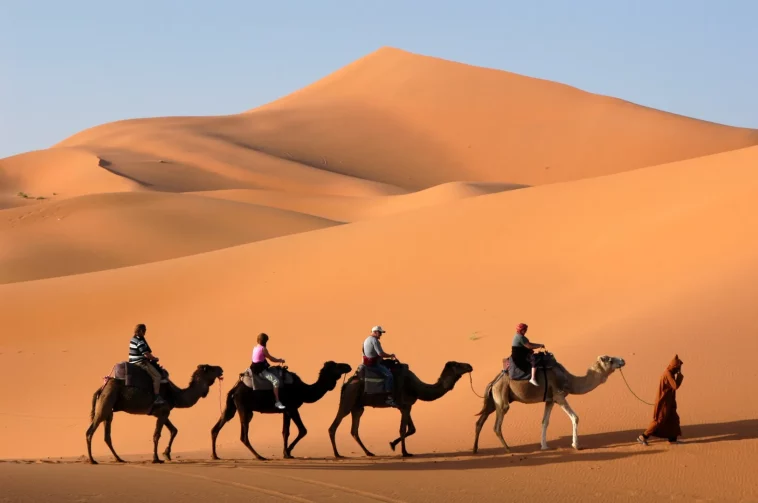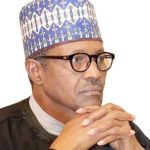By Dana Hourany, Beirut. December, 2022
Early in November 2022, authorities found an ancient Christian monastery on an island off the coast of the United Arab Emirates that may have existed centuries before Islam spread throughout the region.
The monastery, which is a component of the Umm al-Quwain sand dune sheikhdom on Siniyah Island, provides fresh information about early Christianity in the Gulf region. The monastery, which dates back up to 1,400 years, is only the second of its kind to have been discovered in the Emirates.
The monastery was constructed between the early sixth and middle of the seventh century CE, according to carbon dating of samples found in the foundation. Based on the layout of the site, early Christian worshippers most likely prayed inside a single-aisle church. The structure appears to house a baptismal font and an oven for baking communion bread or wafers. Officials say there was probably also an altar and a communion wine installation in a nave.
The first Christian monastery in the United Arab Emirates was found in the early 1990s and dates to the same time period as the recent discovery in Umm al-Quwain. It is located on Sir Bani Yas Island, which now features a nature reserve and a luxurious hotel off the coast of Abu Dhabi.
According to available data, human existence appeared in Umm al-Quwain as early as the Neolithic era. Archaeologists on the scene have added that the newly discovered site would be gated off and protected owing to the mystery of what other secrets may be buried beneath the island’s sands.
In light of the fact that little is known about pre-Islamic Arabia, experts say the new discovery highlights the Gulf region’s desire to build a cultural reputation beyond its oil-rich credentials.
The beginnings
Timothy Power, an associate professor of archaeology at the United Arab Emirates University who assisted in the investigation of the recently discovered monastery, reports that excavation work is suspended until January after which a new season will begin and last until the start of Ramadan in March 2023.
The government intended to develop Siniyah Island for upscale villas but had asked the department of archeology and tourism to conduct investigations to determine whether the plans posed a harm to any archaeological monuments, according to Power.
“The plan will now be expanded to accommodate more participants since we have received more financing from the ministry of youth and culture,” Power told Fanack. “Additionally, we intend to begin excavation works in a village close to the monastery.”
The village is located 500 meters from the monastery; excavation works will reveal which structure came first, the village or the monastery, Power said. The team will investigate this by examining architectural similarities that have been discovered in other churches and monasteries in the Arabian Gulf. According to the archaeologist, the monastery’s architectural design suggests that monks lived in segregated homes for spiritual retreats that were dispersed around the monastery.
This style of monastery is common in the Levant and demonstrates how these monasteries were constructed by local Christian tribes that brought the same liturgy, beliefs, and Christian faith from the Levant to the Arabian Peninsula, Power said.
“When the Quran was revealed, the population was predominantly Christian and Jewish, which had laid the groundwork for monotheism, so if we want to understand how Islam developed, we must examine what came before,” Power said.
The archaeologist claims that the discovered water tank, which was used for baptisms, is consistent with Aramaic Syriac literature that describe how monks from Iraq and Syria would head to desert regions in an effort to convert pagans in Arab countries.
“When it comes to the forgotten presence of Christian communities in the once-multiethnic Arabian Peninsula that existed before the rise of Islam and the transformation of the Gulf region into the epicenter of Islam, there is a significant portion of Arabian history that has been lost,” he said.
Pre-Islamic Arabia
Based mostly on evidence from the region’s pre-Islamic archaeological and epigraphic remains, Arabs of the Arabian Peninsula practiced a number of faiths. The Arabian Peninsula is home to a vast number of pre-Islamic sites, including old cairns, graveyards, and rows of raised stones.
Polytheists worshiped multiple idols, with each tribe having its own god. Even the Kaaba in Makkah, which Abraham and his son Ismael are said to have constructed to serve God, was once a pantheon housing 360 stone and wooden idols.
As for the Zindiqs, they are said to have taken influence from the Persian doctrine of dualism in the 3rd century CE. They believed that two gods who represented good and evil were constantly engaged in a battle for supremacy between light and darkness.
After the Romans had devastated Jerusalem in 70 CE, there were also a considerable number of Jews present. Many Jews relocated to the Hijaz region of Arabia around 957 BCE after being forced to leave Palestine and Syria.
With their largest concentrations in the towns of Yathrib, Khayber, Fadak, and Umm al-Qura, many Arabs converted to Judaism.
Additionally, the Romans converted the Ghassan tribe of North Arabia around the 3rd century CE which had immigrated to and settled in the Hijaz, to Christianity. Since Najran was their stronghold, Ethiopian invaders initially brought the faith to Yemen.
Monotheism was also confirmed in several inscriptions of the late Sabaen Period (after 389 CE), in which Arabs, Jews, and Christians were found to worship the same deity, RHMNN.
RHMNN (Rahmanan), the most merciful, was mentioned in a Sabaic inscription that was found in Ma’rib Yemen and dated to roughly the 4th century CE. This Sabaic inscription draws parallels between this concept and the Islamic attribute al-Rahman conferred upon Allah.
Numerous epithets demonstrating how RHMNN was frequently referred to by the 99 names of Allah in Islam, with one inscription saying “… the name of Rahmanan and his son Christ, the triumphant…”
Prior to the advent of Islam, Arabia did have certain monotheists (hanifs). Since they were Abraham’s disciples, they did not worship idols. This movement included the family of the Prophet Muhammad as well as Ali ibn Abi Talib, the fourth Caliph and the prophet’s son-in-law.
Traces left
Christianity’s spread slowed after 676 CE, particularly in the area around Bet Qatraye, which encompasses all of northeastern Arabia. Historians claim that this is consistent with their absence from subsequent documented accounts of the Gulf region.
Kuwait’s Al-Qusur, Saudi Arabia’s al-Kharg, and the Emirates’ Sir Bani Yas are three locations in the Gulf that are believed to have been under Christian rule from the end of the 8th century until the beginning of the 9th CE. Ceramics, which date to the end of the 7th or the beginning of the 8th through the 9th century, were used to identify the sites.
The churches at these three locations share a similar layout and construction method, and they appear to have been a part of a monastery. The Syriac and Arabic manuscripts, however, still require further examination, according to specialists, as a number of sources have not yet been identified.
Helene Sader, Professor of Archaeology at the American University of Beirut, told Fanack that for the longest time, the Arabian Peninsula remained an untapped land full of archeological treasures ready to be discovered.
“The Gulf countries are opening up to the world by allowing such excavations to take place and facilitating the process for the experts,” the professor said.
As a result, she says, the rise of Islam will be better understood, for it “did not emerge out of thin air.”
In fact, the religion founded by Prophet Mohammad was the result of a long process of cultural development that can be discovered through the Peninsula’s hidden historical evidence.
“Experts need to study the finds to determine whether it is a one-time discovery or if it is related to another archeological discovery,” Sader said.
“Judaism, Christianity, and pagan cultures coexisted on the peninsula, but we need to find out more about these forgotten tribes that influenced the Gulf region’s history,” she continued.
The Gulf today
According to Sader, obtaining permits and gaining authority over excavations are among the biggest challenges archeologists face today. With a growing interest in the history of the Gulf region from local authorities, she predicts further bewildering discoveries in the future.
Rather than just being an oil-rich business hub, the region can become an important tourist and cultural destination in the Arab world, she added.
Although Kuwait has several churches whereas Saudi Arabia has none, tensions between Christians and Muslims do occasionally resurface when it comes to issues like church construction and religious freedom in these countries.
Meanwhile, the UAE started construction on its first synagogue in Abu Dhabi in 2021 as part of a wider, state-funded initiative to build a mosque, church, and synagogue in the same site.
Additionally, many churches serving international Christians from all denominations and continents, such as Europe, North America, Africa, Asia, and the Middle East, can be found in the United Arab Emirates.
Sidra Shahbaz, a social scientist residing in the UAE, said the country aims to become a symbol of tolerance by promoting diversity.
“Creating a sense of safety for expats and minorities paves the way for a more productive society,” Shahbaz told Fanack.
The social scientist predicts that the Emirati authorities will continue to explore ways to demonstrate inclusion to other religious groups besides Islam in an effort to strengthen their position in the region on social, cultural, and economic levels.






